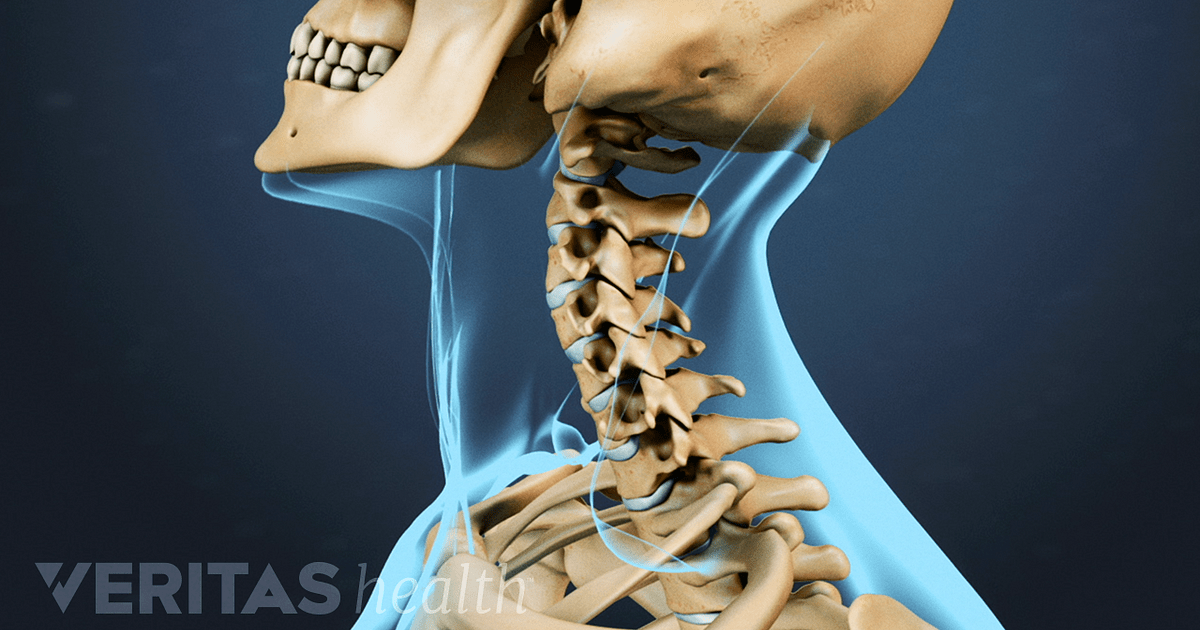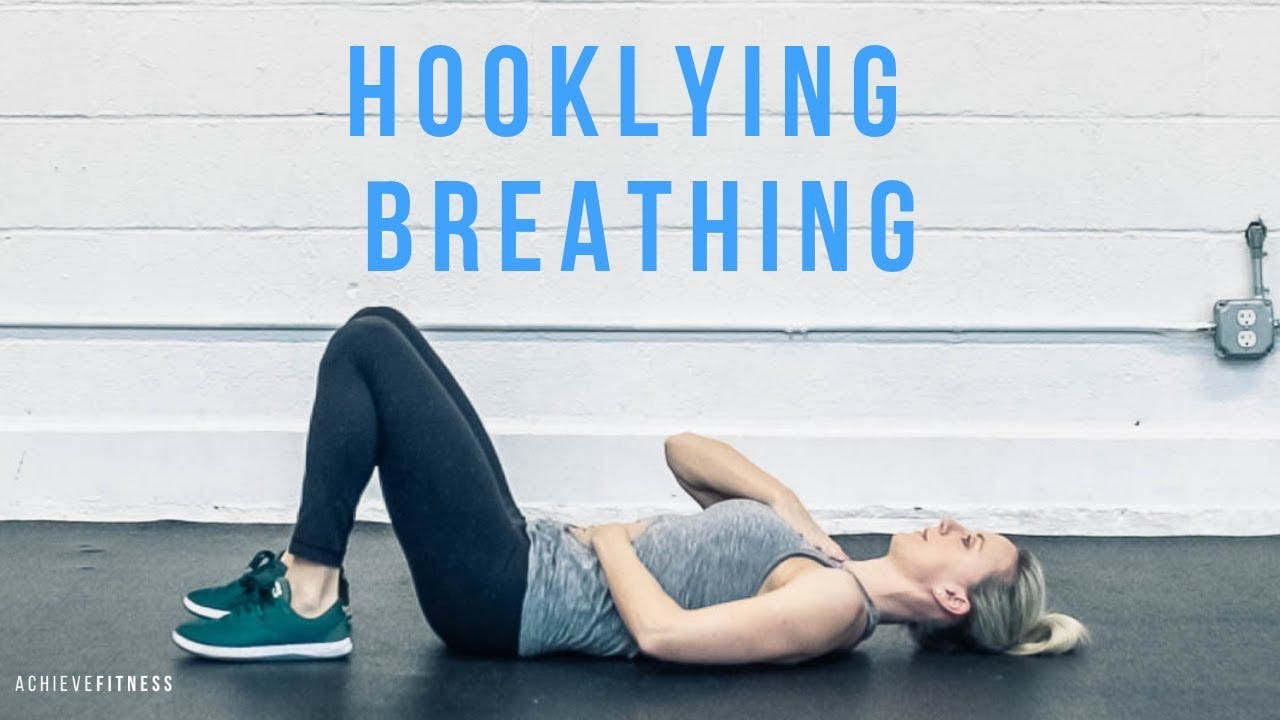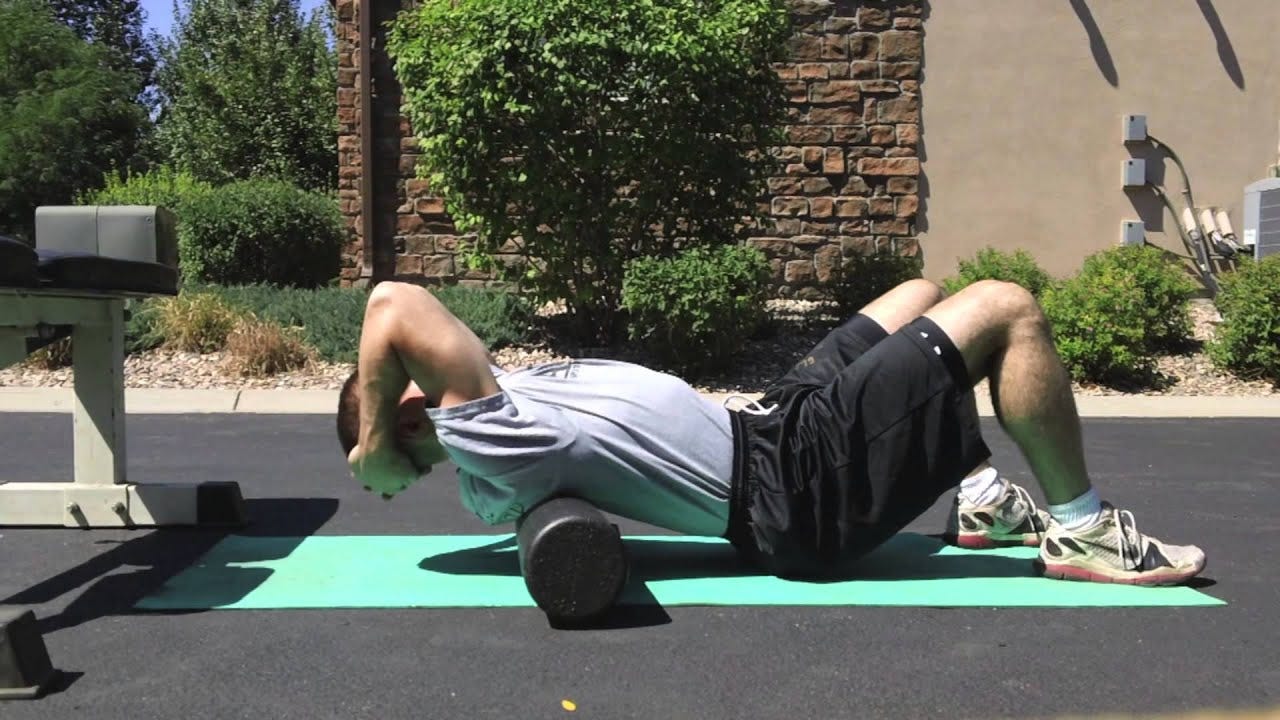
When I have clients gently lay supine with a soft ball (i.e., squash ball) on the levator scapulae, it often replicates the referral pattern up along the same side of the neck/ear. I do not think that self-myofascial release (SMR) fixes the underlying problem. However, I do think it helps create temporary relief, without the use of drugs. Additionally, SMR does help down regulate the tonicity of muscles, which can be beneficial when trying to lengthen tissue. Sullivan, Silvey, Button, and Behm (2013) reported that brief foam rolling, or self-myofascial release, for 10 seconds or more over a muscle group both relaxes and lengthens the same muscle group. Additionally Mohr, Long and Goad (2014) found that combining foam rolling with static stretching improved range of motion greater than stretching or foam rolling alone.

There are strengthening exercises that can help with weak/inhibited neck muscles. Page, Lardner, and Frank (2010) articulated Janda’s findings regarding the chronic musculoskeletal pain cycle (CMPC) paradigm; it indicates that muscle imbalances are part of a larger cycle. I might start with deep diaphragmatic breathing (DB) to help move the client away from a sympathetic response to a more parasympathetic response, as a means of relaxing the client (Page et al., 2010). It should be noted that I am still experimenting with different developmental positions to get the best positions for optimal DB.

Following DB are motions that help self-mobilize (i.e., not hands-on) regions of the musculoskeletal system that are over facilitated first. I would begin with SMR first on the thoracic spine and rotator cuff group while performing DB. I would follow this with a motion to help restore normal thoracic spine range of motion. Then I would re-test thoracic left and right rotation to see if I could reach 45 degrees per side. Once this is present, I would follow with an exercise that encourages a tall spine, such as the half-kneeling contralateral weighted holds; the narrow stance induces a tall spine through reflex stabilization, which encourages postural stability (Page et al., 2010).

At the same time, I would teach the client a neutral neck by coaching the chin to pull back towards the throat (i.e., packed neck). In this way, I am creating “room” for the neck to get in a position by indirectly focusing on more distal problems (i.e., thoracic spine ROM, DB, strengthening and postural stabilization). I am hesitant to perform exclusive isolation training to a muscle (i.e., the neck), if I can strengthen a muscle successfully in larger, more robust, motions. This is predicated on the idea that the brain recognizes movement patterns, not individual muscles, when initiating and sustaining movement (Magill, 2011).
I help build strength and endurance of the neck indirectly through coaching a packed neck during all exercises (i.e., planks, deadlifts, get-up variations). Additionally, I will not load the cervical spine in rotation, flexion, or extension based on the research of McGill (2007), and what he understood as mechanisms of disc failure in the lumbar vertebrae. I have read that isometric exercises can be good, but I have found success with said approaches.
References
Magill, R. A. (2011). Motor learning and control: Concepts and applications (9th ed.). New York: McGraw-Hill.
McGill, S. (2007). Low back disorders: Evidence-based prevention and rehabilitation(2nded.) Windsor, ON: Human Kinetics.
Mohr, A. R., Long, B. C., & Goad, C. L. (2014). Foamrollingand static stretching on passive hip flexion range of motion. Journal Of Sport Rehabilitation. Retrieved January 30, 2014 from http://eds.a.ebscohost.com.p.atsu.edu/eds/detail?vid=7&sid=bd6a6510-bbd3-469c-947c-
Page, P., Lardner, R., & Frank, C. (2010). Assessment and treatment of muscle imbalances: The Janda approach.Champaign, IL: Human Kinetics.
Sullivan, K. M., Silvey, D. B. J., Button, D. C., & Behm, D. G. (2013). Roller-massager application to the hamstrings increases sit-and-reach range of motion within five to ten seconds without performance impairments.International Journal of Sports Physical Therapy.8(3), 228-229.
-Michael McIsaac
